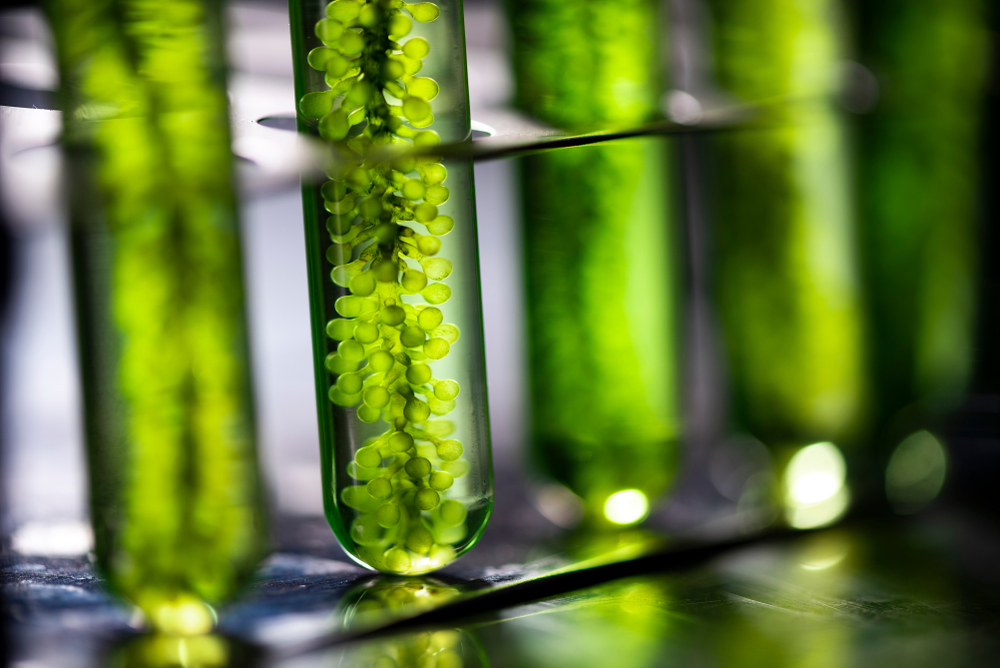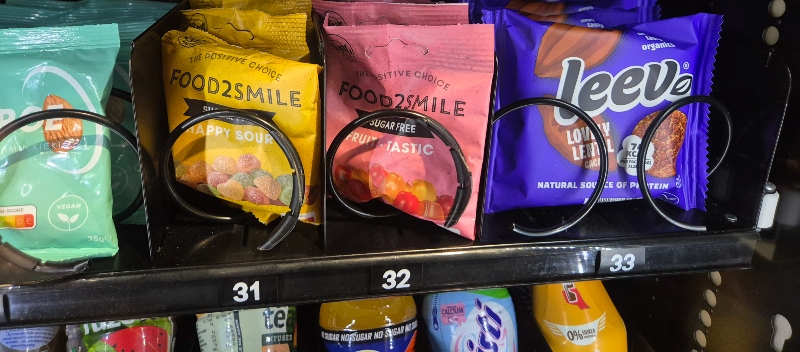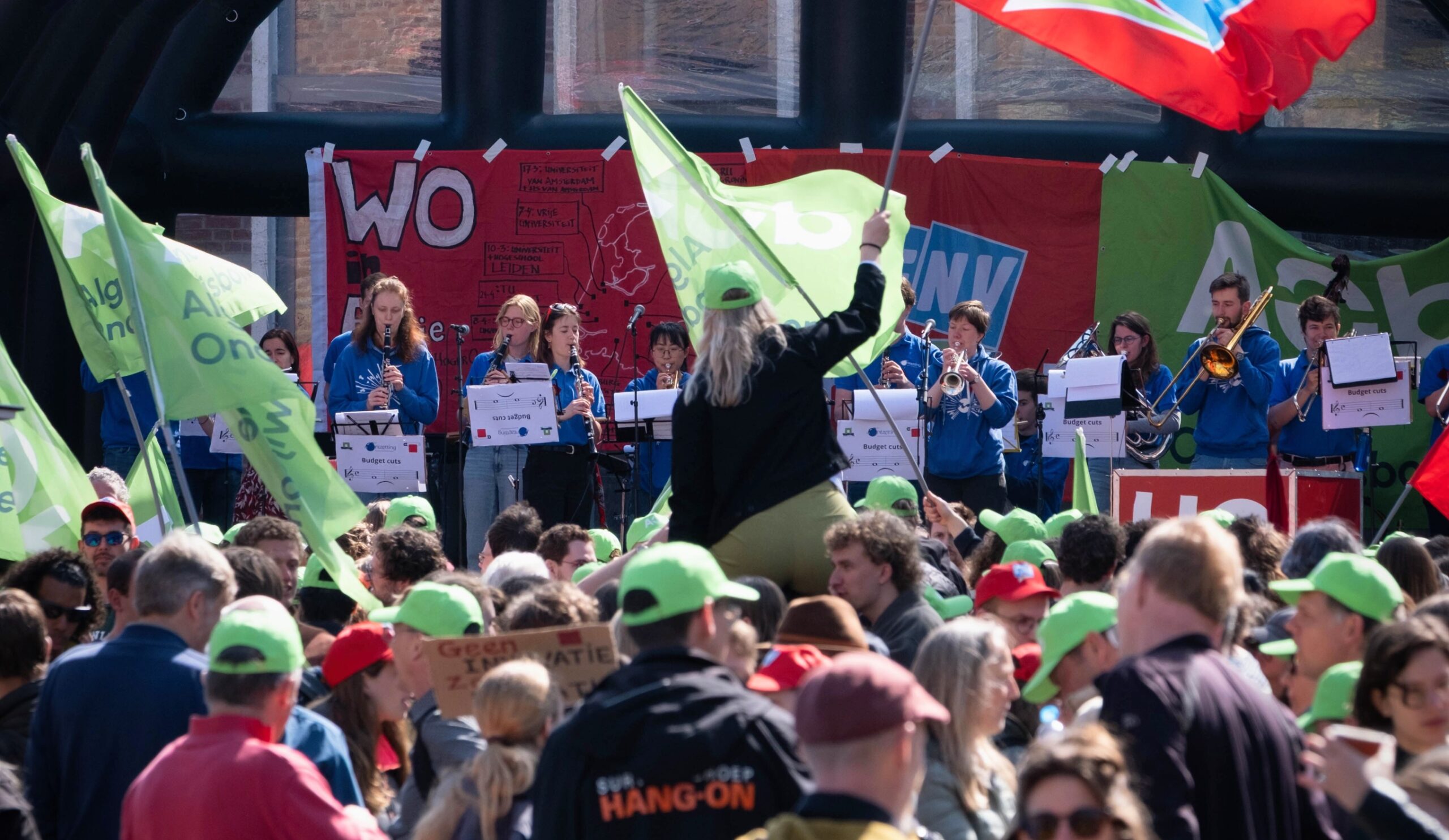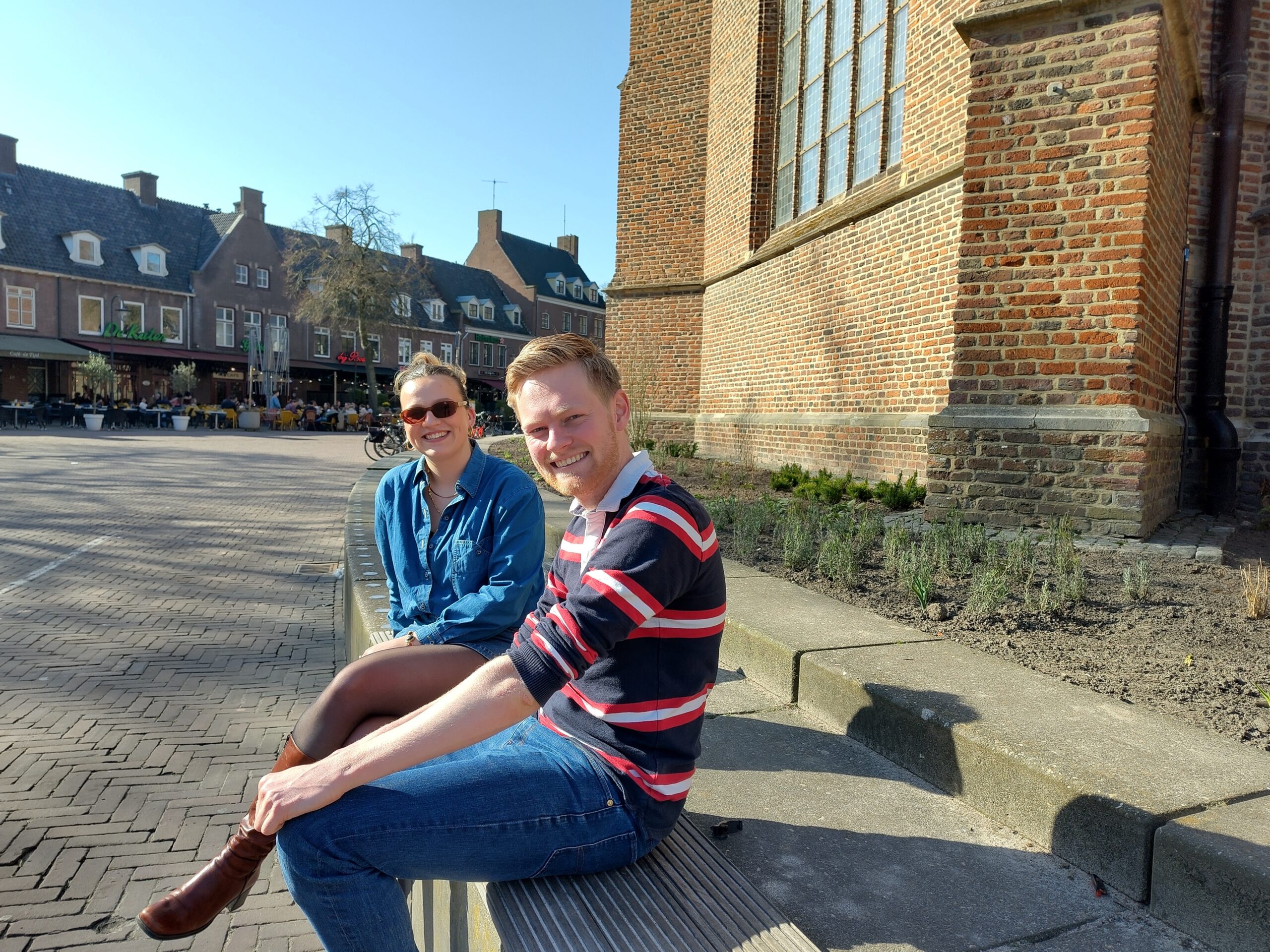Oostlander did tests using the alga Rhodomonas sp. working with aquaculture companies in Zeeland Province. They use the algae as fish feed in the farming of turbot and shellfish such as oysters. Rhodomonas sp. is a suitable ingredient for fish feed because it produces fish oil with the right proportion of Omega 3 fatty acids.
Bubble column
The aquaculture companies have a choice of two different reactors for growing algae in. They use traditional bubble column reactors – large plastic bags two meters high and filled with water and algae, which they blow air though. And they use modern tubular reactors, horizontal glass tubes. Oostlander compared these two production systems combined with two different kinds of light: lamps in an enclosed space, and sunlight in a greenhouse.
Tubular reactor
His calculations showed that the current production costs of the algae come to between 300 and 600 euros per kilo of algae. ‘I based that on a new production facility. The traditional bubble column is cheaper to buy than the advanced tubular reactor, but it also produces much smaller quantities of algae per reactor volume.’ In the end, this makes the tubular reactor the cheaper option per kilo of biomass, claims Oostlander – both when using artificial light and when using sunlight.
Light
He investigated how production costs could be reduced. The main saving comes from the algae converting light into biomass more efficiently. Increasing the light, perhaps combining sunlight with artificial light for example, can reduce the costs per kilo of algae by 30 per cent. The growers can also save on labour costs and optimize the temperature in the algae reactors to boost the yield. With these measures, the cost price goes down to 100 to 200 euros per kilo of algae. ‘At the moment, farmed fish is more expensive than wild fish from the sea,’ says the PhD graduate. ‘Using cheaper fish feed can reduce the costs of aquaculture and farmed fish can compete better with wild fish, which makes fish consumption more environmentally friendly.’
Healthy
With so much focus on costs and yields, the question remained of whether there would still be plenty of omega 3 fatty acids. ‘If you want to produce algae as fast as possible, the percentage of healthy fatty acids goes down a bit. At a lower temperature, you produce fewer algae, but the quality goes up. Fish farmers will have to try to optimize that.’
Oostlander graduated on 6 October with a PhD supervised by Professors Maria Barbosa and Rene Wijffels of the Bioprocess Engineering char group.

 Algae, photo: Shutterstock
Algae, photo: Shutterstock 

